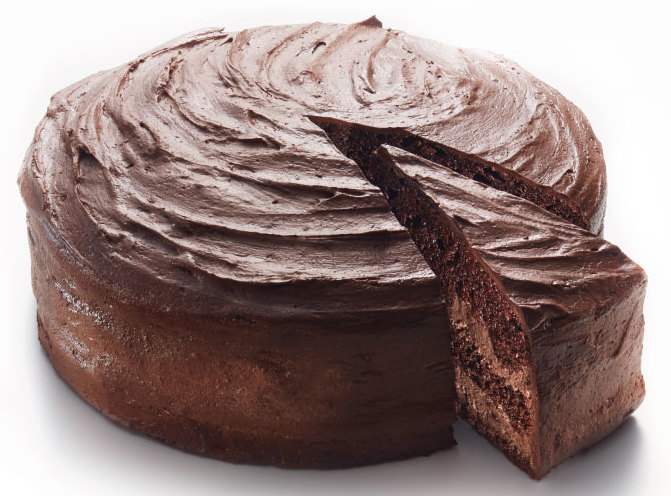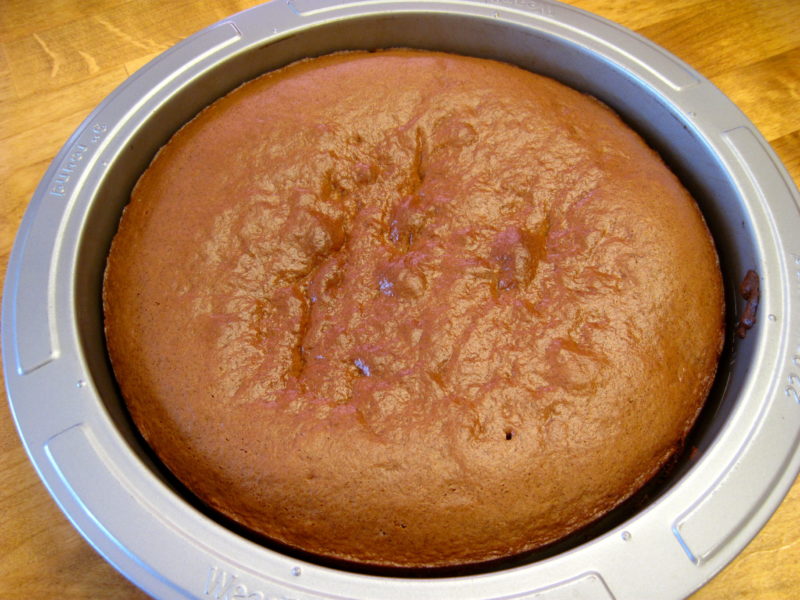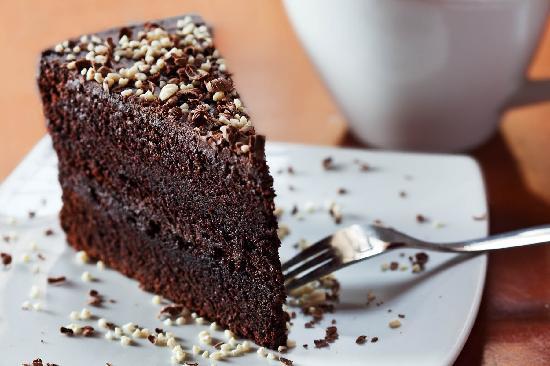In those relatively recent times, which many of our compatriots recall with light and bright sadness - during the time of the Soviet Union - the housewives tried to bake this wonderful cake at least once a year. We are talking about the famous and extremely tasty cake "Prague". This delicacy has such a pleasant, truly indescribable taste that the recipe for its preparation has long been preserved in families as the apple of an eye. Mothers shared them with their daughters, and they passed them to the next generation - and so the cake came to us.
Today, the classic Prague recipe is enriched with various interesting additions, modern housewives have the opportunity to bake this treat not only in the oven or oven, but also in the slow cooker. This article presents interesting technologies for making the Prague cake in a slow cooker (baking photos are attached).
A bit of history
The name of the cake "Prague", one of the famous symbols of Soviet cooking, has nothing to do with the capital of Czechoslovakia. The author of the magnificent dessert, which has become the favorite of many, is Vladimir Guralnik, who worked as a leading pastry chef in the Prague restaurant in pre-perestroika times. Although this delicacy in the store was quite expensive, the cake never stopped on the shelves, especially on the holidays, when the housewives wanted to please their loved ones with something unusual and tasty. In their own kitchens, home-grown confectioners conducted countless experiments, trying to independently solve and put into practice the secrets of baking the famous dessert. Thus was born an infinite number of options for the preparation of "Prague", which, along with the classic recipe for goodies, enjoy well-deserved attention and popular love.
Description of a dessert loved by many
This cake attracts attention, first of all, an abundance of chocolate. The dessert is a combination of sponge cakes, chocolate cream, cocoa and fudge. The biscuit is baked, according to a traditional recipe, from eggs, butter (cream), sugar and flour, which is sifted with cocoa powder. The finished biscuit is cut into three layers, soaked with alcohol and sugar syrup, and then layered with the famous "Prague" cream, for the preparation of which use soft butter, condensed milk, egg yolks and cocoa. Typically, the cream is used to impregnate only two cakes, the third is covered with some kind of jam (fruit and berry). Traditionally for “Prague” apricot confiture is used: the acidity inherent in these fruits effectively shades the rich sweetness of chocolate present in abundance in the cake. Finally, the surface of the cake is filled with chocolate icing and decorated with cream, chocolate chips and nuts. Dessert decorated with chocolate figures that some housewives fashion with their own hands looks very impressive.

Cake "Prague": a classic recipe for a slow cooker
Dessert prepared in accordance with GOST standards in a slow cooker turns out to be unusually tasty. The treats are very popular with both children and adults and worthily decorates any festive feast.
Ingredients
For biscuit you will need:
- 150 g of sugar;
- 120 g of flour;
- 6 eggs;
- 40 g butter (soft creamy);
- 25 g of cocoa.
For cream use:
- 200 g butter;
- 120 gr. condensed milk;
- one yolk;
- vanillin (to taste);
- 20 g of water;
- 10 g of cocoa.
For glaze you will need:
- 60 g of chocolate (dark);
- 50 g of butter (butter);
- 50-70 g of jam (apricot).
Cooking cake in accordance with GOST
According to the classic recipe, the Prague cake in a slow cooker is prepared as follows:
- The yolks are separated from the proteins. Chilled proteins beat with half the sugar until a stable foam. The remaining yolks are mixed with granulated sugar. Then they sift flour and cocoa powder, add proteins. Melt the butter (butter), add to the dough.
- A bowl of multicookers is greased with butter (creamy), I pour the dough into it. For one hour, set the mode of "Baking" (125 degrees) or "Multipovar". The readiness of the biscuit is checked with a toothpick. The finished cake is left to stand for 8-10 hours at room temperature.
- Next, start to prepare the cream. The yolk is mixed with 20 g of water, the condensed milk is added, after which the mixture is poured into a multicooker bowl. Cook in the "Multipovar" mode (100 degrees) for a duration of 4.5 minutes. The cream is cooled. Beat with a mixer butter (soft creamy) and vanillin (one pack). Add whipped cream with 10 g of cocoa cream (2 tbsp. Tablespoons). Ready cream should be removed in the refrigerator for 10 minutes.
- Then the biscuit is divided into 3 parts (equal). One of the cakes (bottom) is smeared with cream, on top they put the second cake, oiled with cream and a little cream is left to decorate the cake. Then one more cake (last) is laid on top and greased with jam (apricot).
- Then prepare the icing. In the bowl of the multicooker melt the chocolate and butter (butter). Set the “Multipovar” mode for two minutes (100 degrees).

Cooking according to the standard Prague cake recipe in the multicooker is completed. Next, the product is poured with icing and removed for 10 minutes in the cold. Then, using a pastry syringe, decorate the cake with cream, and then put it in the refrigerator for two hours.
How to make a Prague cake in a slow cooker: a recipe with milk cream
On this cake, experts recommend not sparing condensed milk. The result of the preparation of the Prague cake in a slow cooker (the recipe with a photo is presented in the section) will justify expectations: the treat will turn out to be very sweet and amazingly tasty, as if in childhood. To prepare the test, use:
- a can of condensed milk (fresh);
- three tablespoons of cocoa powder;
- a dessert spoon of soda;
- vinegar (to quench soda);
- two chicken eggs;
- flour (200 ml).
For cream you will need:
- 400 ml of milk;
- four tablespoons of flour and cocoa powder;
- 300 ml of sugar;
- one egg;
- 200 g of butter (butter).
To create jewelry use chocolate chips (white and dark). For the convenience of transporting cakes - semolina (a little).
Cooking steps
In accordance with this recipe, the Prague cake in a multicooker is prepared as follows:
- First, they do the test. In a separate container, milk (condensed) and eggs are mixed. Beat thoroughly until the mixture becomes thick and uniform. Soda vinegar is added to the dough. Then flour, cocoa powder are added there, and again everything is thoroughly mixed. After that, the dough is placed in a slow cooker, the bowl of which is pre-coated with oil (bottom and walls). Pour semolina (a little) - for the convenience of removing the baked cake from the bowl. Pour the dough into the bowl and start the “Baking” program for 60 minutes.
- Meanwhile, a cream is being prepared. Sugar is poured into a clean bowl (deep) or pan, flour and a raw egg, flour are added, after which everything is mixed. Then pour 200 ml of milk, mix, add the remaining milk. Mix again, put on the stove. The cream is boiled until thick. The bowl is removed from the heat, the finished cream is cooled, the butter and cocoa are added and mixed again.
- Now you should start creating a cake. The cake is taken out of the multicooker, cooled, cut horizontally into three layers, each of which is lubricated with milk cream.
- To decorate the surface of the cake sprinkled with grated chocolate. The finished dessert is sent to the refrigerator.
It will take approximately 1 hour to cook the Prague cake using the recipe in the Redmond slow cooker (as well as any other). From the presented number of products, about 8-10 servings will be obtained.
What other cream can I use?
To prepare the Prague cake for the home recipe in the multicooker, the hostess uses various cream options. One of the most popular is a product created from whipped butter (butter), condensed milk and cocoa. Ingredients:
- half a can of condensed milk;
- 0.15 kg butter;
- two large spoons of dried cocoa.
How to make a cream?
The oil is removed from the refrigerator, waiting for it to soften, after which it is placed in a deep bowl and thoroughly whipped using a mixer, an ordinary whisk or just a fork. Then condensed milk and cocoa powder are added and once again everything is whipped. To cool the product, place the dishes with the finished cream in the refrigerator for an hour and a half.
On the secrets of making cream for the Prague cake
Experienced housewives recommend preparing the cream in a water bath - while the yolks are mixed with condensed milk, and the mixture is boiled until it thickens. Oil (soft creamy) is introduced into the cooled product and beat well. To simplify the cooking process, butter can be mixed with cocoa and condensed milk without adding egg yolks to the cream. An equally delicious cake is obtained with a classic butter cream. Another successful cream option recommended by the hostesses is a mixture of eggs, sugar, milk, condensed milk and flour, which is whipped with a mixer and then simmered. After the cream boils, it is cooled and, as usual, mixed with softened butter (butter) and cocoa. A very airy and gentle cream is obtained if the butter is whipped in a mixer until a snow-white color appears, and then at a slow speed, with constant whipping, cocoa and condensed milk are added. Sometimes chocolate (melted) is added to the composition instead of cocoa; if the dessert is intended for adults, the cream can be flavored with rum or cognac.

How to decorate a cake?
You can decorate the surface of the cake by completely coating it with cream and sprinkling it with nuts (without using glaze and jam). Sometimes the Prague cake is decorated with a sprinkle of chocolate (grated) or chocolates. Also, the cake can be decorated with cream roses made using a pastry syringe. On top of the chocolate glaze, you can use cream to bring out the classic inscription - the name of the cake and decorate it with fresh berries and mint leaves.